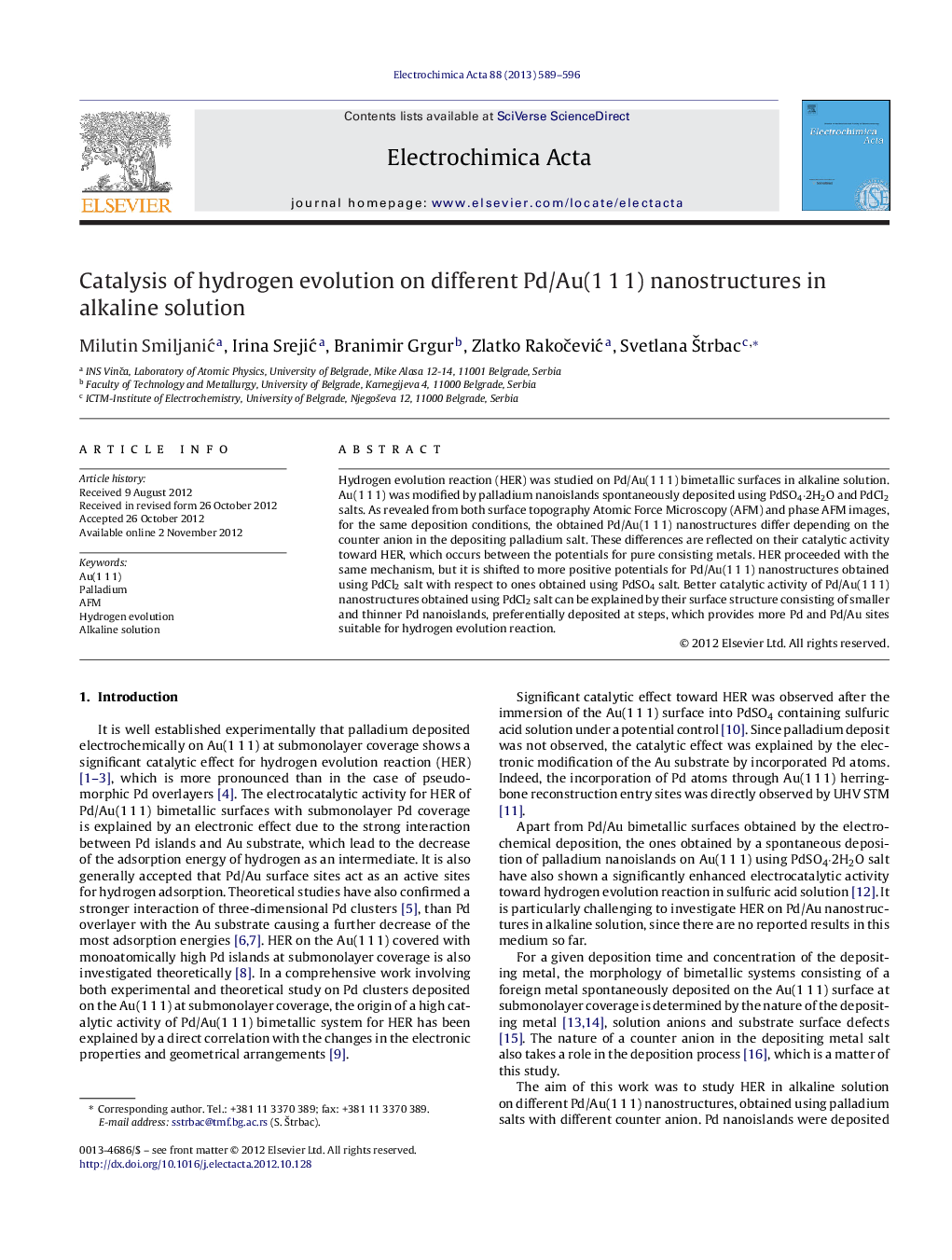| Article ID | Journal | Published Year | Pages | File Type |
|---|---|---|---|---|
| 187743 | Electrochimica Acta | 2013 | 8 Pages |
Hydrogen evolution reaction (HER) was studied on Pd/Au(1 1 1) bimetallic surfaces in alkaline solution. Au(1 1 1) was modified by palladium nanoislands spontaneously deposited using PdSO4·2H2O and PdCl2 salts. As revealed from both surface topography Atomic Force Microscopy (AFM) and phase AFM images, for the same deposition conditions, the obtained Pd/Au(1 1 1) nanostructures differ depending on the counter anion in the depositing palladium salt. These differences are reflected on their catalytic activity toward HER, which occurs between the potentials for pure consisting metals. HER proceeded with the same mechanism, but it is shifted to more positive potentials for Pd/Au(1 1 1) nanostructures obtained using PdCl2 salt with respect to ones obtained using PdSO4 salt. Better catalytic activity of Pd/Au(1 1 1) nanostructures obtained using PdCl2 salt can be explained by their surface structure consisting of smaller and thinner Pd nanoislands, preferentially deposited at steps, which provides more Pd and Pd/Au sites suitable for hydrogen evolution reaction.
Graphical abstractFigure optionsDownload full-size imageDownload as PowerPoint slideHighlights► Pd nanoislands were deposited on the Au(1 1 1) using PdSO4·2H2O and PdCl2 salts. ► HER was studied in alkaline solution on different Pd/Au(1 1 1) nanostructures. ► Those obtained using PdCl2 salt have shown better catalytic activity. ► Correlation between the catalytic activity and surface structure is discussed.
